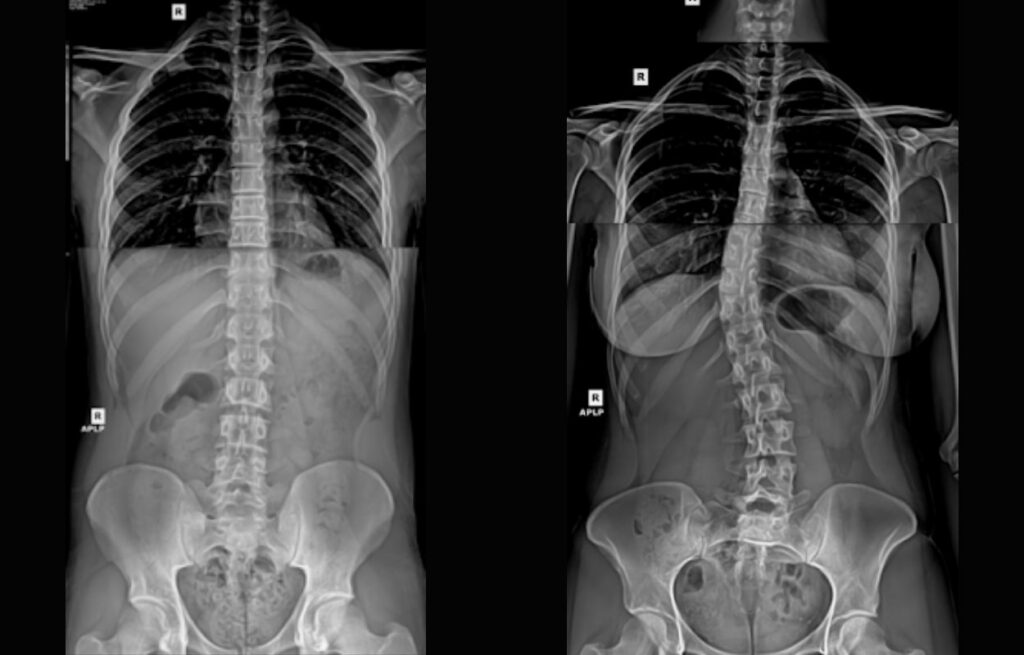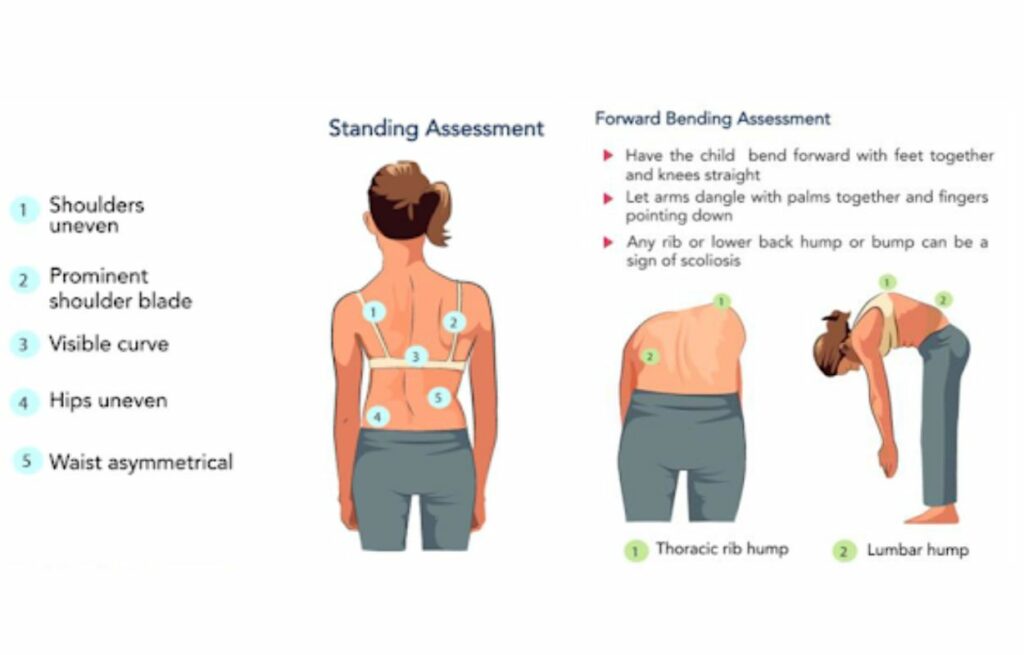Scoliosis 101
By Dr. Tim Fargo, Chiropractor
The term “scoliosis” is often used, and almost as often misunderstood. I wanted to give you a few basics on the condition so that you can better understand whether you or someone you know is suffering from actual scoliosis and what might be done about it.
A spine, when looked at from the front or from behind, should be relatively straight, like on the x-ray that you see on the left below. I should point out that it took me a bit of looking through random X-rays in our patient population to find even this one that was relatively straight. Many people (I would say the majority) are not perfectly straight on the plumb line. By contrast, some people exhibit significant curves when you look at them from the front or back. If those curves are structural (there is actual deformity of the spinal bones themselves), the curve is greater than 10 degrees, and there is rotation of the spine accompanying the sideways curves, then we say that the person has scoliosis. You can see such a spine below on the right.
 There are many causes, and the severity and impact on health is extremely variable. The most common type is known as “idiopathic”, which means “of no known cause”. 80% of scoliosis is in this category and the vast majority are girls. No one knows why this type occurs, nor do we know why girls are disproportionately affected. There are other causes such as congenital malformations, neurological diseases, and injuries. Scoliosis gets a lot of headlines because, particularly in young people, and especially during puberty, the curves can become rapidly progressive. Another thing that is not well known is that even in adulthood scoliosis tends to progress. The average rate of progression in adults is 1.28° per year.
There are many causes, and the severity and impact on health is extremely variable. The most common type is known as “idiopathic”, which means “of no known cause”. 80% of scoliosis is in this category and the vast majority are girls. No one knows why this type occurs, nor do we know why girls are disproportionately affected. There are other causes such as congenital malformations, neurological diseases, and injuries. Scoliosis gets a lot of headlines because, particularly in young people, and especially during puberty, the curves can become rapidly progressive. Another thing that is not well known is that even in adulthood scoliosis tends to progress. The average rate of progression in adults is 1.28° per year.
There are a large number of adults who never had scoliosis as children, but develop it throughout adulthood and into their later years. This is known as “adult degenerative scoliosis”. Scoliosis in older adults can also be rapidly progressive. Below you can see an x-ray of someone with just such a curvature. This is a woman in her mid-70s who never had scoliosis during childhood. Unlike children, adults usually have pain associated with the deformity. Some children also have pain, but generally, they do not.
 Being a spinal deformity, some clues are often detectable. Posture is one way of detecting scoliosis. Once suspected, it is essential to have an x-ray done to determine the severity, risk of progression, and the appropriate course of treatment. Below is a guide to detecting scoliosis with postural assessment.
Being a spinal deformity, some clues are often detectable. Posture is one way of detecting scoliosis. Once suspected, it is essential to have an x-ray done to determine the severity, risk of progression, and the appropriate course of treatment. Below is a guide to detecting scoliosis with postural assessment.
 Once a determination has been made that a person has scoliosis and that it requires some sort of intervention, then there are a range of treatment options depending on age, maturity, curve magnitude, and the risk of progression. The doctors at Chiropractic Health and Wellness in Edina, Minnesota, are well-trained to both assess and treat even severe cases. Treatment can range from simple and specific exercises and adjustments to specific traction therapies designed to reduce scoliotic curves and even to rigid bracing to reduce the curvature. Only the most extreme cases require surgery and the doctors at Chiropractic Health and Wellness are well trained to determine when such a referral is needed. If you, a family member, or a friend is concerned about scoliosis, then please do not hesitate to consult with one of our doctors. We specialize in treating scoliosis and have seen hundreds of cases.
Once a determination has been made that a person has scoliosis and that it requires some sort of intervention, then there are a range of treatment options depending on age, maturity, curve magnitude, and the risk of progression. The doctors at Chiropractic Health and Wellness in Edina, Minnesota, are well-trained to both assess and treat even severe cases. Treatment can range from simple and specific exercises and adjustments to specific traction therapies designed to reduce scoliotic curves and even to rigid bracing to reduce the curvature. Only the most extreme cases require surgery and the doctors at Chiropractic Health and Wellness are well trained to determine when such a referral is needed. If you, a family member, or a friend is concerned about scoliosis, then please do not hesitate to consult with one of our doctors. We specialize in treating scoliosis and have seen hundreds of cases.



